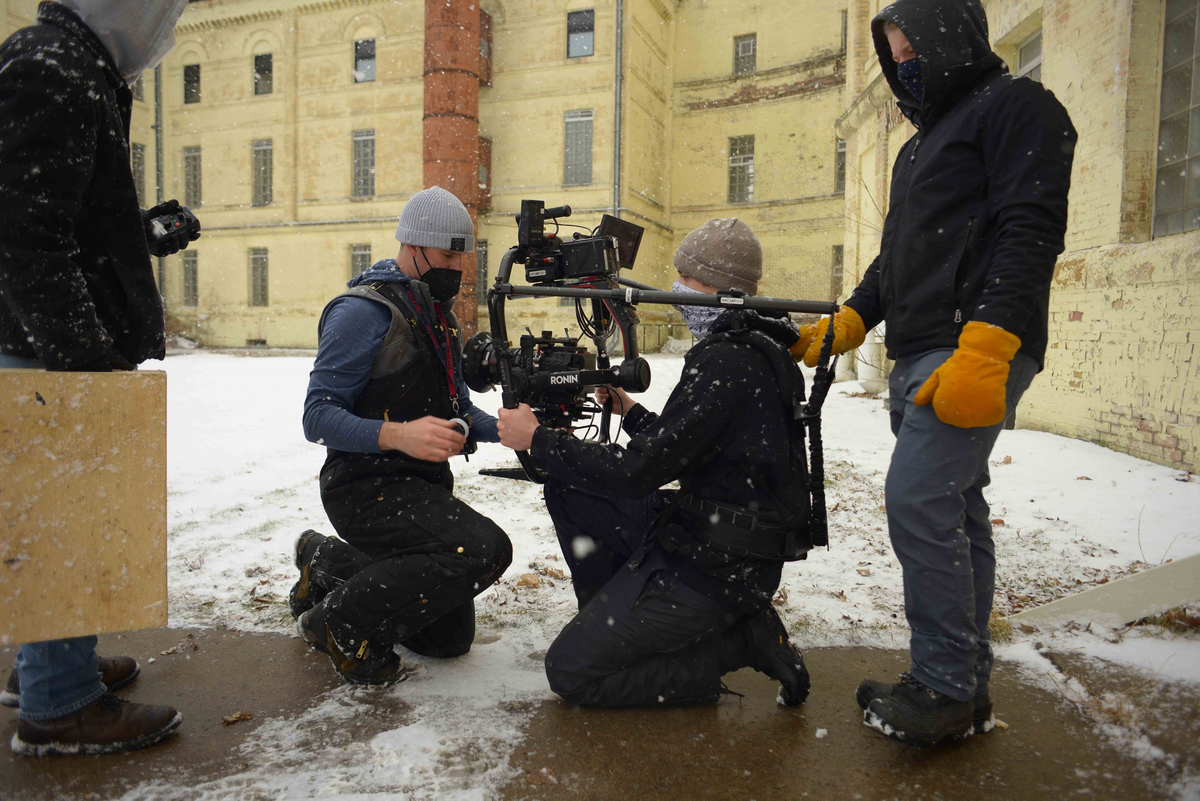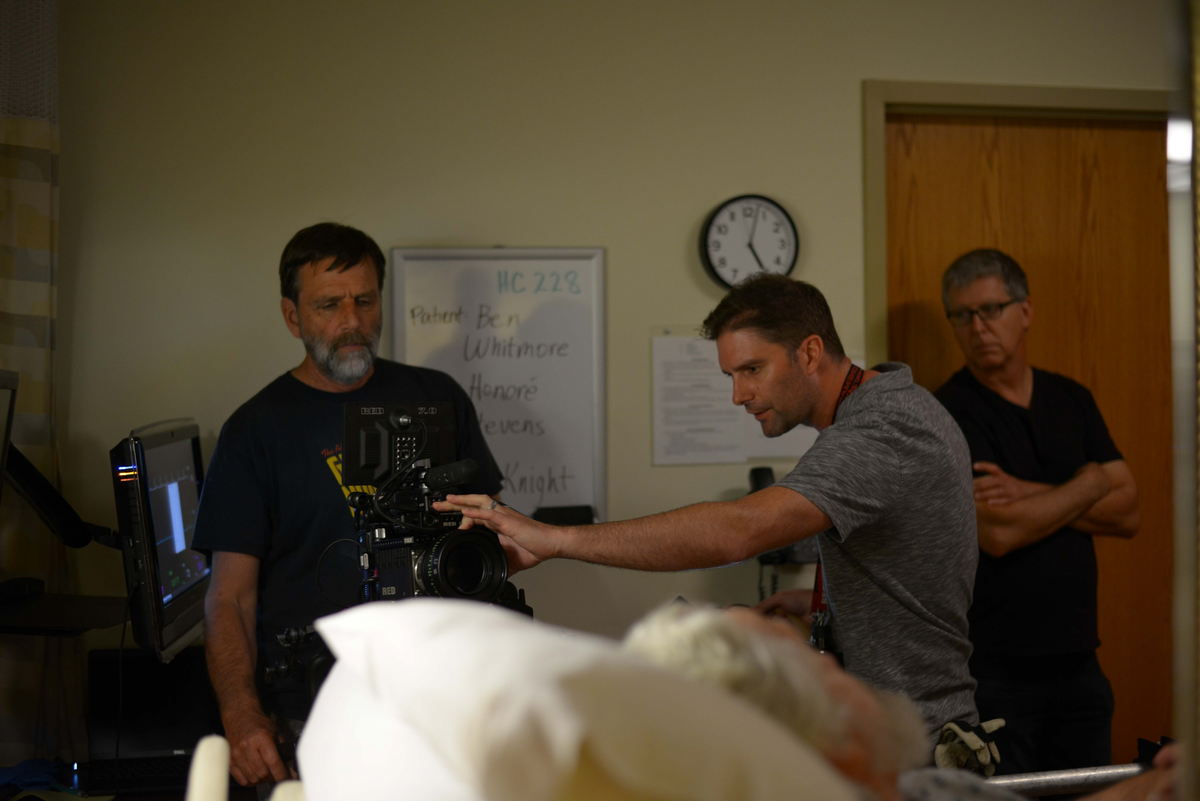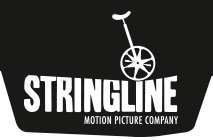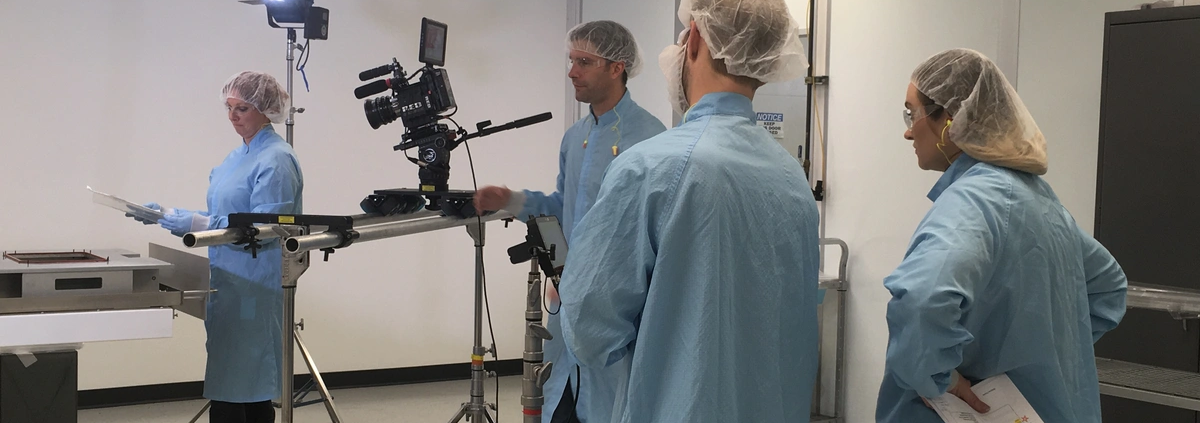Film Crew Positions: Crucial Jobs & Duties Explained (Intro Guide)
The world of filmmaking is a layered one, and while it may seem easy for the casual film fan to watch a film and simply appreciate the end product, a whole range of professionals work together to deliver what you see on screen.
In filmmaking, every occupation from the director all the way down to set designers has specific roles, duties, and responsibilities. In film production terms, a film crew is any person hired to work on a film set. These film crew positions help the director and other production staff work more efficiently while filming.
So what are the crucial roles in film production, and what does each person do? Some people imagine films being produced by a “one-man band,” while others think of the giant crews that work on a Hollywood movie. As you may have guessed, the size of the film crew will mostly depend on how large the production is. We’re going to lay out the film crew positions that are essential to almost any production, regardless of the size, and explain their primary functions.

Film Crew Positions Explained
Some of these film crew titles will be familiar to you, and others might be new. You may be surprised at what each of these roles entails, even if you’ve heard of them before! Another thing to note is that depending on the size of the production and budget, some of these jobs could be done by the same person.
Director
The film director is essentially the captain of the ship. Although he or she may not have written the film or have ownership of it, it’s their responsibility to know the creative vision and overall goal for the film and direct the entire team to accomplish that goal. The director will likely have a say in everything that goes on in the production, including casting, lighting and camera angles, set design, shot-calling, and more.
Although they oversee everything, the directors’ primary responsibilities are:
- Visualizing the script and bringing it to life
- Hiring the cast of the film
- Directing the cast in every scene
- Providing direction for the production crew during the shoot
- Overseeing the editing of the film
- Communicating and directing the heads of each production department
- Guiding the creative vision for the entire project

Assistant Director
Depending on the scale of the film, there may be multiple assistant directors, each of which has its own roles. Ultimately, the film assistant director, or AD for short, acts as a liaison between the crew and film. They keep track of all the schedules to make sure everything runs smoothly.
The assistant director is responsible for:
- As the name describes, assisting the director in any way possible
- Creating and managing shooting schedules
- Communicating the director’s queues to the rest of the crew
- Problem-solving and making the show run smoothly
Producer
Like the director, the producer of a film wears many hats. The difference is that the producer isn’t necessarily involved in the creative aspect of the film. Their role is more focused on the overall organization and funding for the film.
A producer has to:
- Get the director and crew on board for a new film
- Provide overarching guidelines for the film
- Secure funding for the project
- Provide organizational objectives
Director of Photography

The director of photography is responsible for taking the director’s guidance and translating that into the actual recording of the film. The DP is at the head of the camera crew and manages every shot and the proper lighting for those shots.
DP’s primarily:
- Direct the camera crew
- Direct the lighting technicians
- Bring the director’s vision to life through camera work
Camera Operator
As you probably guessed, camera operators are responsible for capturing their assigned shots with their individual cameras. If a scene requires it, film sets will have multiple camera operators. Camera operators take direction from the director of photography, the assistant director, and the director.
Gaffer
The gaffer is the lead lighting technician. They work closely with the DP to make the lighting set the mood and atmosphere for the shot as requested by the Director or DP. The gaffer is in charge of the electricians who set the lighting and manage all the power needs for the set.
Key Grip
Contrary to what it sounds like, grips do not simply move equipment from location to location. Grips are highly skilled technicians who manage all the non-electrical equipment on set and will assist camera crews with supporting equipment such as dollies and jibs. Grips will work closely with gaffers and camera operators.
Sound Producer
The sound producer’s primary role is to capture audio on the set of the film. They are in charge of all of the microphones and recording different types of audio throughout the film. Recording sound goes beyond just dialogue in the film; it’s all about how they capture that dialogue, background noises, subtle sound effects, and more.
Boom Operator

You know that long pole with the big fuzzy thing at the end? That’s called a boom mic. The boom operator is in charge of positioning that boom mic properly in order to capture the best quality audio possible. The boom operator knows when, where, and how to hold microphones based on the sound producer’s direction.
Set Designer
Even though it’s not always on the top of your mind, the environment the film is shot in plays an enormous role in the overall feel of every shot and the film as a whole. The set designer works with the director to design a set that best fits the director’s vision for the film.
Production Assistants
The role of a production assistant is to be helpful in any way possible on the set of a film. Although they are typically considered to be the lowest on the totem pole in terms of crew members, production assistants are vital to the success of films. For the most part, PAs run around and take care of smaller tasks around the set to take things off the rest of the crew’s plate.

Contact Stringline Pictures For Help With Your next Big Video Production!
Producing a film is a massive undertaking. Although we covered the major film crew positions on most sets, film crews can contain a lot more members than what we mentioned above. If you’re interested in bringing your creative vision to life through film, but you don’t know where to start, reach out to us! Here at Stringline Pictures, we have over 15 years of experience in the film-making industry. From scriptwriting to the final edits, Stringline’s film production crew can bring your vision to life.



